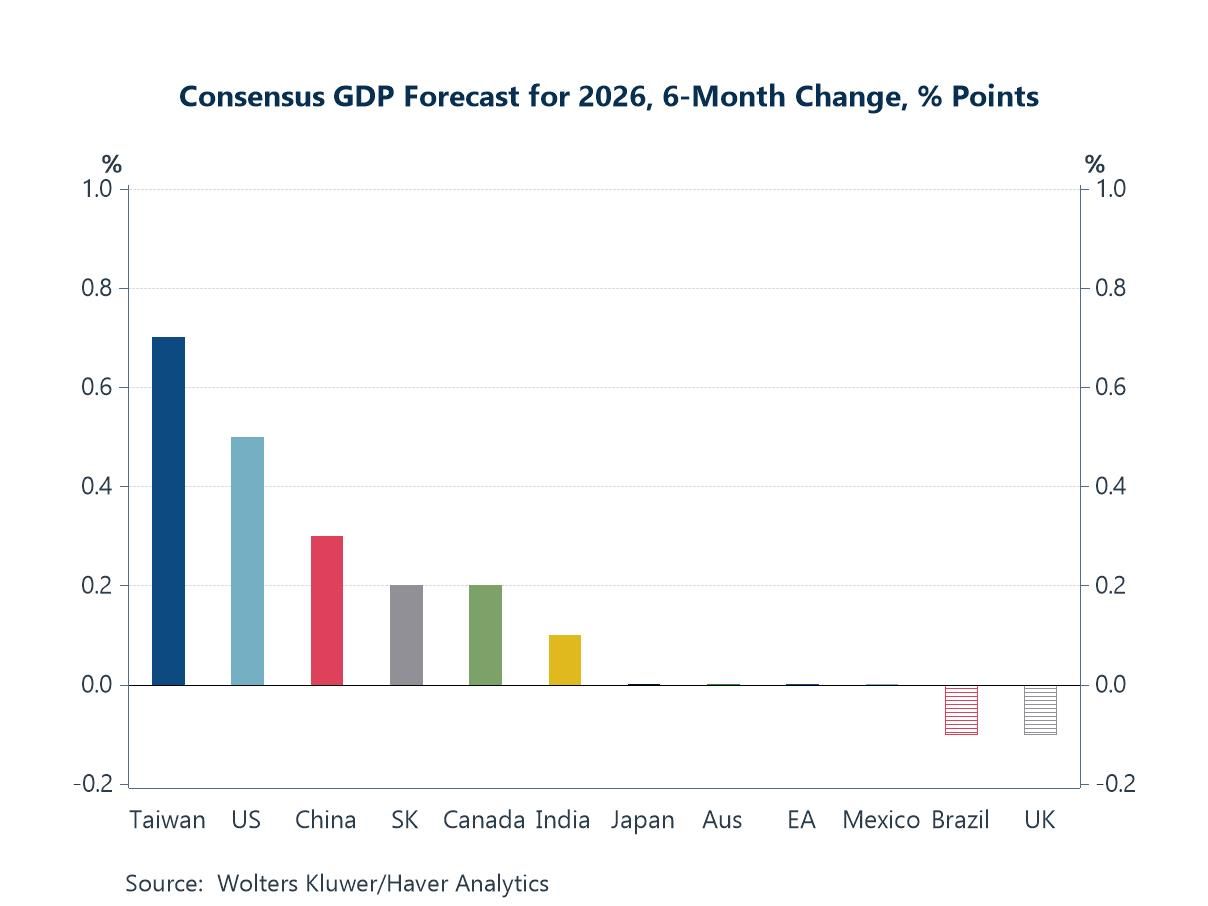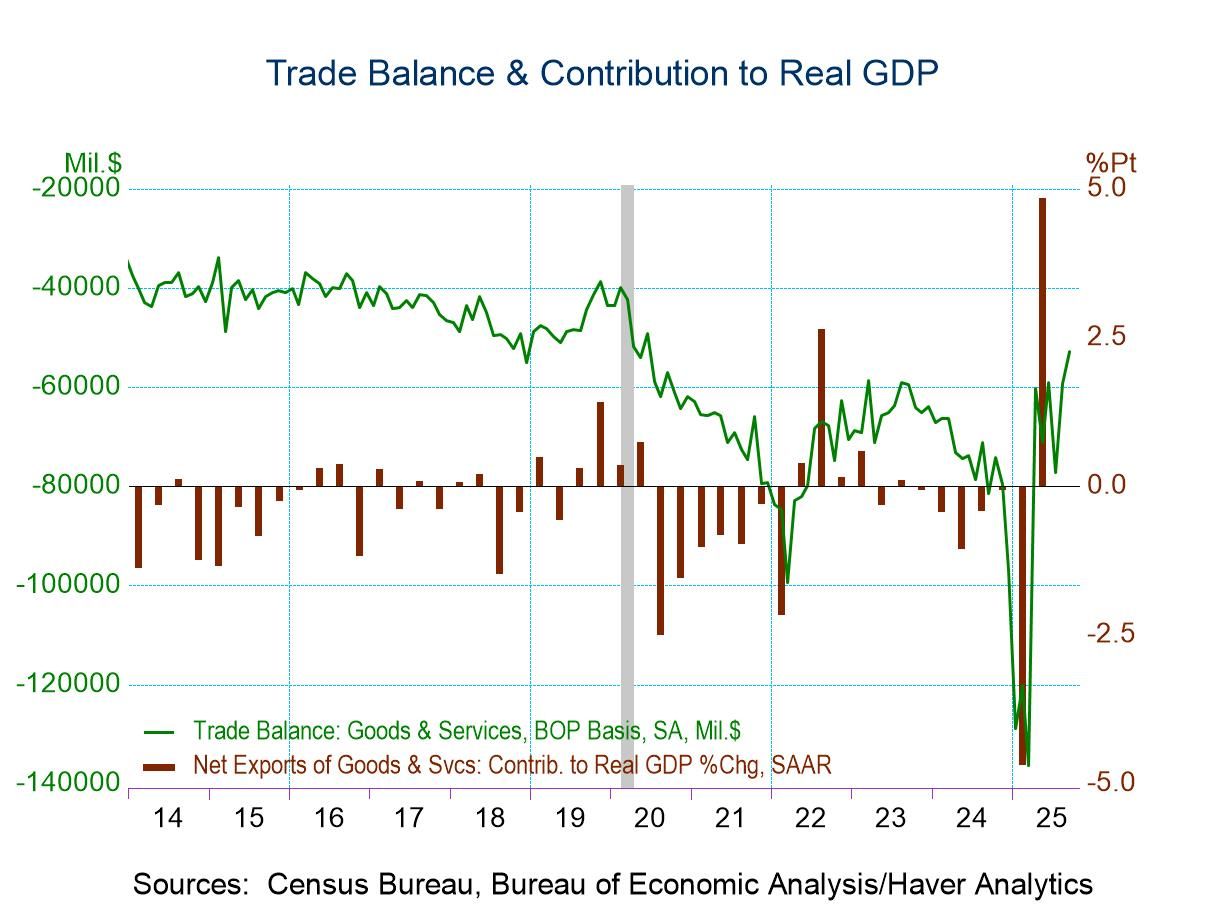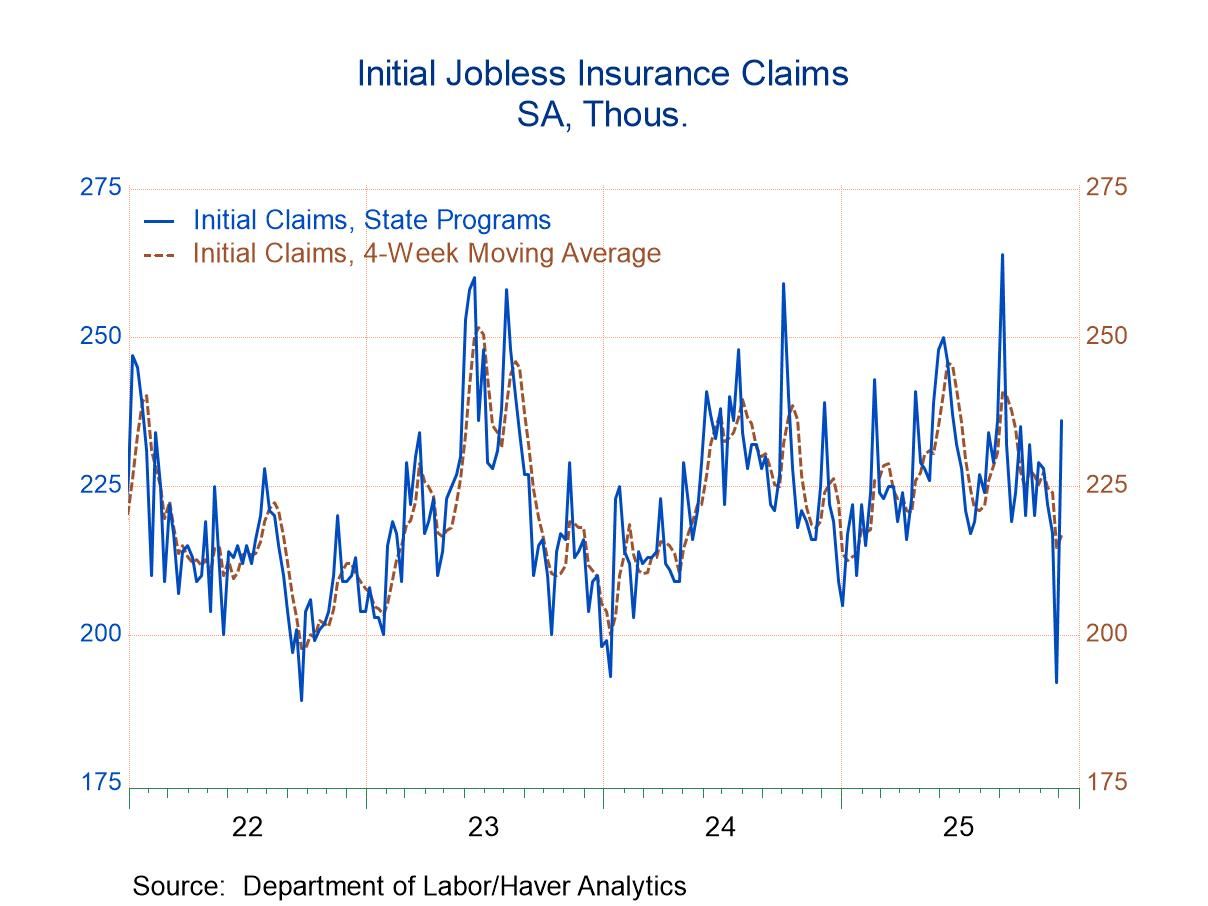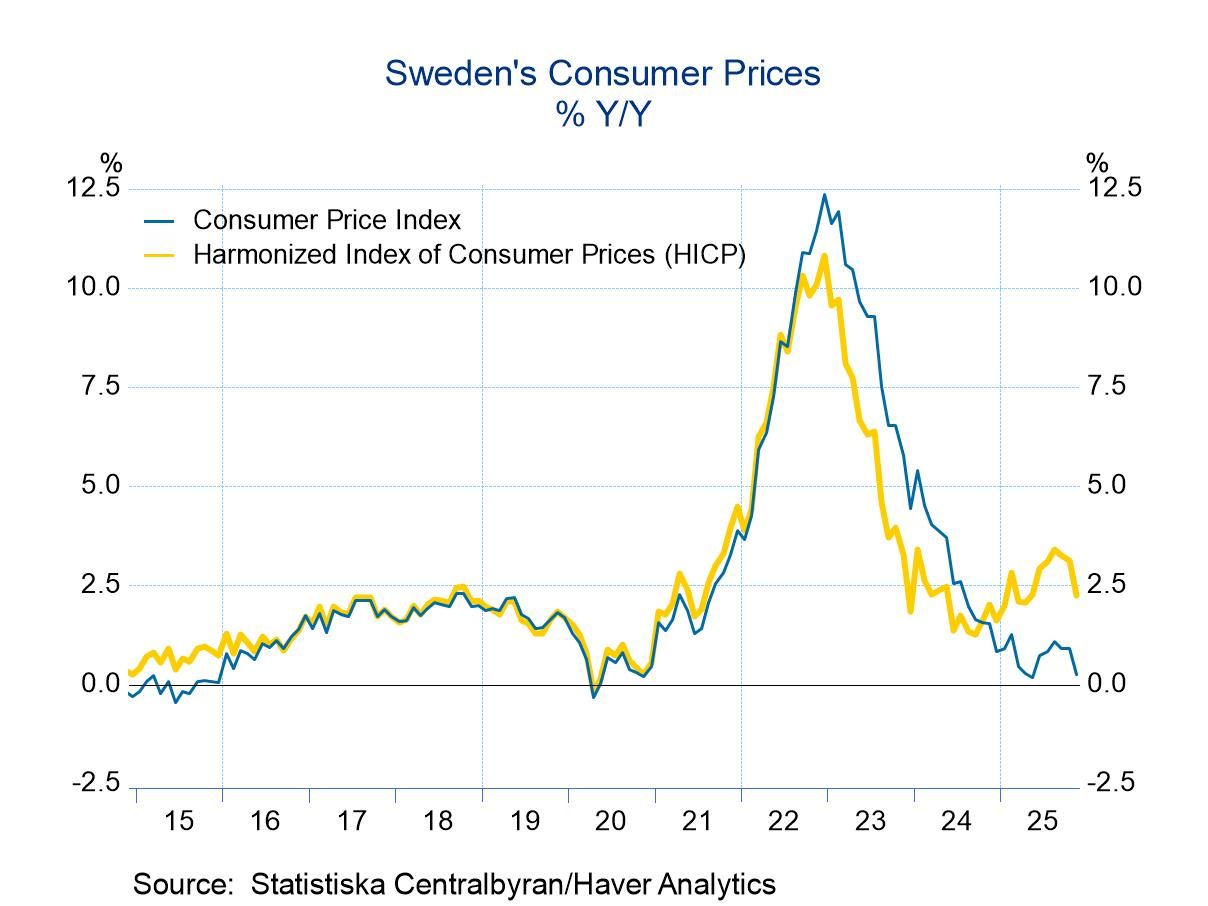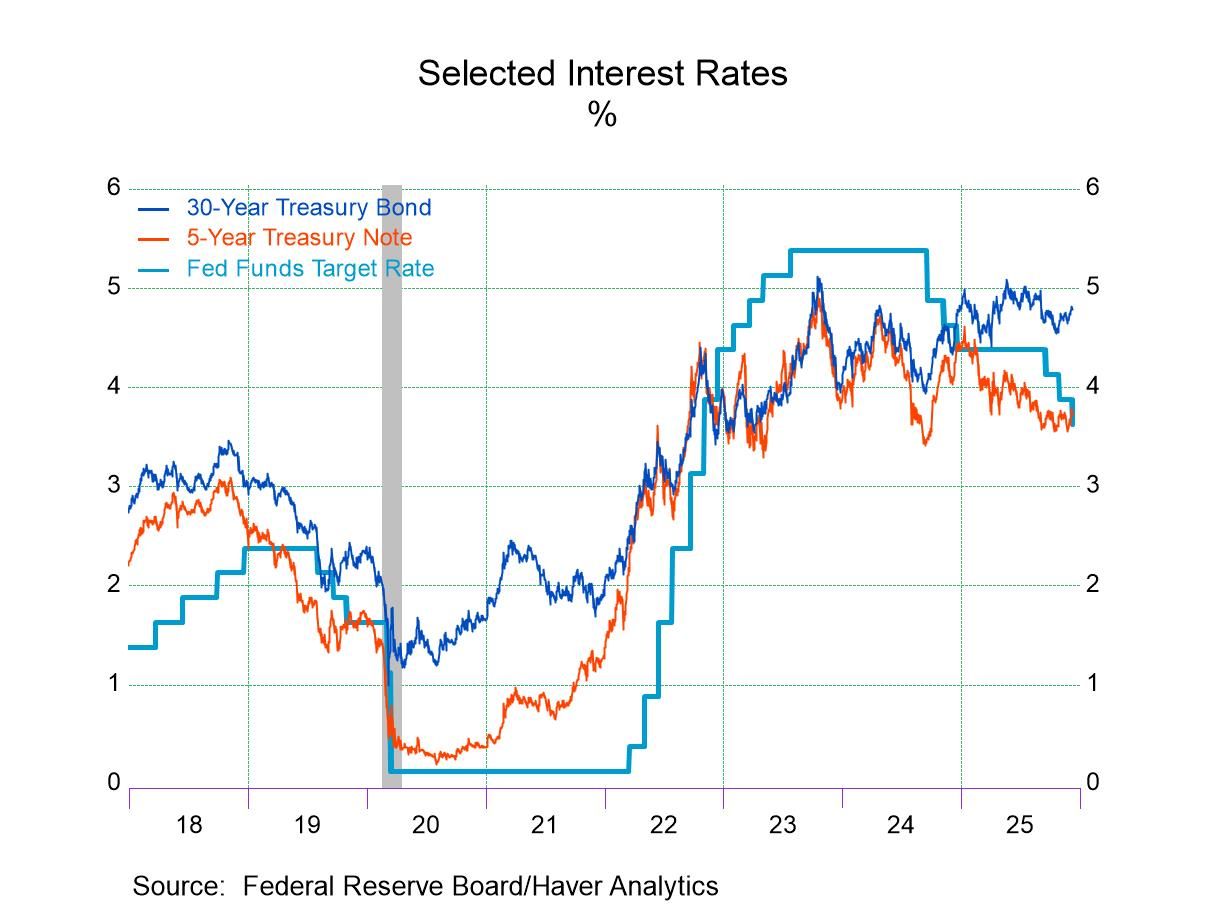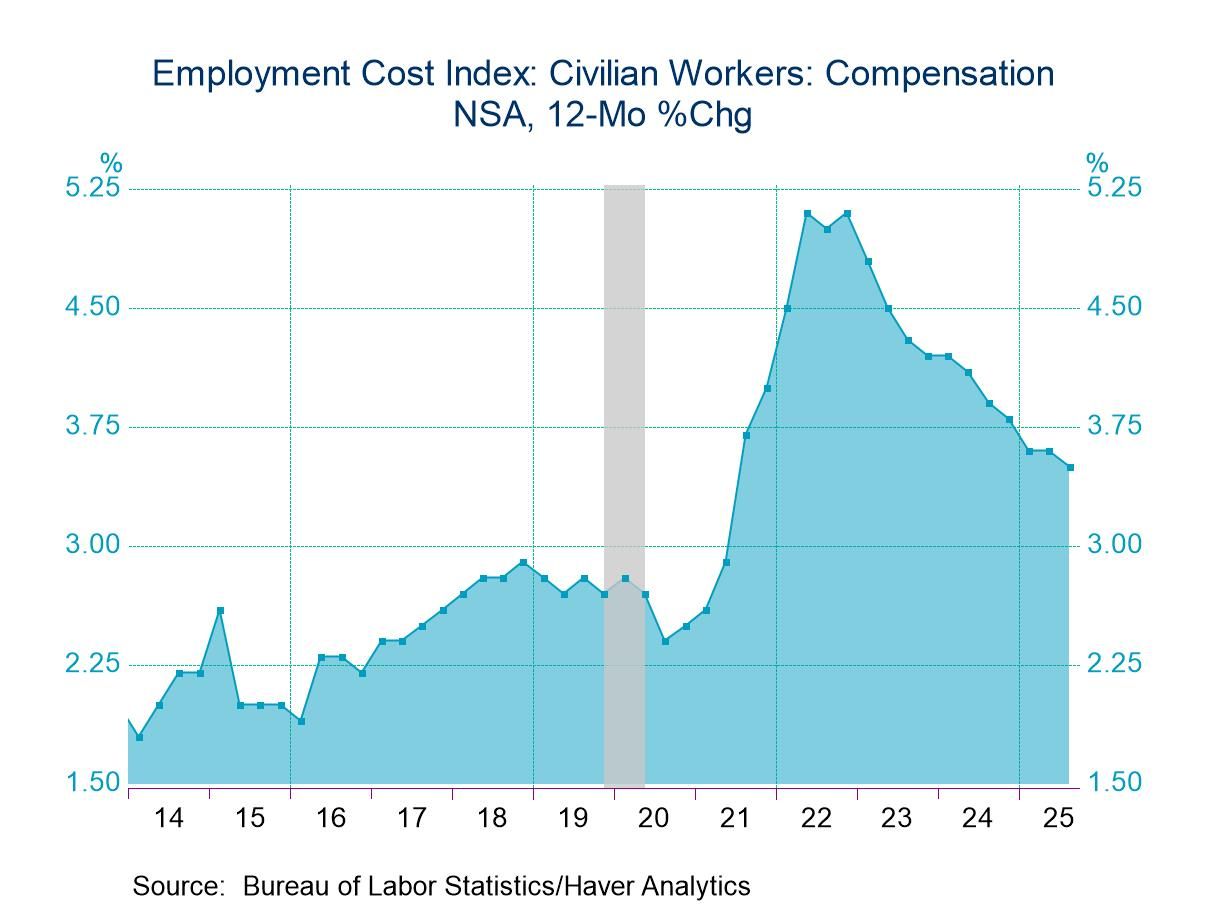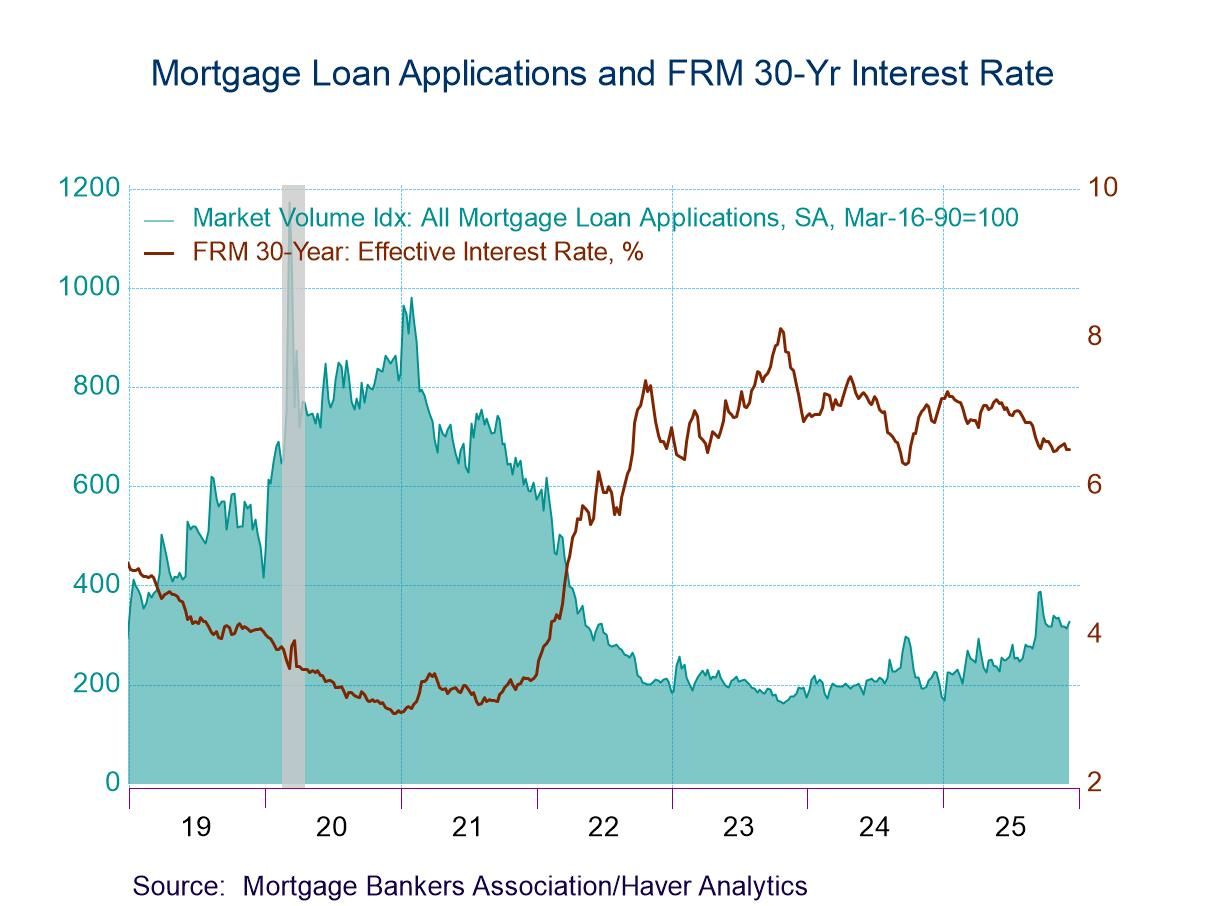- Mortgage rates continue to decline.
- Median income strengthens.
- Affordability improves in most of country.
- USA| Dec 12 2025
U.S. Housing Affordability Edges Higher in October
by:Tom Moeller
|in:Economy in Brief
 Global| Dec 11 2025
Global| Dec 11 2025Charts of the Week: The Downside Risks
As 2025 draws to a close, the global economy enters 2026 with a surprisingly resilient backdrop: equity markets are still trading near cycle highs, volatility is subdued, and consensus forecasts have been drifting upward in recent months—helped by a robust US economy, firmer momentum across Asia, and optimism that AI-related investment will continue to lift the medium-term outlook (chart 1). Against this relatively constructive starting point, we focus this week on the key downside risks that could challenge the consensus narrative next year: the possibility of monetary-policy miscalibration (chart 2); the gap between elevated policy uncertainty and unusually calm financial markets (chart 3); the risk that financial markets may be overestimating the gains from AI (chart 4); renewed strain in global trade (chart 5); and geopolitical tensions (chart 6). These risks do not dominate the baseline outlook, but they help frame the vulnerabilities that could matter if global conditions deteriorate. Next week, we will turn to the upside risks—the forces that could allow the world economy to outperform again in 2026.
by:Andrew Cates
|in:Economy in Brief
- USA| Dec 11 2025
U.S. Trade Deficit Narrows to Five-Year Low in September
- Foreign trade deficit shrinks to lowest since June 2020.
- Surge in exports is driven by foods, industrial supplies & nonauto consumer goods.
- Minimal import increase is held down by fewer capital goods, autos & foods.
- Services surplus eases.
by:Tom Moeller
|in:Economy in Brief
Initial claims for unemployment insurance rose 44,000 to 236,000 during the week of December 6, after declining to 192,000 during the week of November 29, revised from 191,000. The four-week moving average of initial claims was 216,750, an increase of 2,000 from the previous week unrevised average of 214,750, which was the lowest level since January 2025.
Federal government employees initially filed 643 (NSA) jobless insurance claims in the week ended November 29, after 1,126 filed in the week ended November 22, revised from 1,125.
Continuing claims for unemployment insurance posted a sharp decline of 99,000 to 1,838,000 in the week ending November 29, from 1,937,000 the prior week, revised from 1.939 million. The four-week moving average decreased by 27,000 to 1,918,000 in the week ended November 29, from 1945,250 the prior week, revised from 1.945 million. The insured unemployment rate stood at 1.2% in the week of November 29, a decrease from 1.3% in the prior week.
Federal government employees continuing benefits fell to 12,732 (NSA) in the week ended November 22, from 17,862 in the week ended November 15, revised from 17,851.
The insured unemployment rate varied greatly across individual states and territories. In the week ended November 22, the highest unemployment rates were in New Jersey (2.18%), Washington (2.23%), Massachusetts (1.95%), Connecticut (1.83%) and Rhode Island (1.82%). The lowest rates were in Florida (0.27%), South Dakota (0.34%), North Carolina (0.39%), Louisiana (0.42%), Alabama (0.44%), Virginia and Tennessee (both 0.46%), and Arkansas and Nebraska (both 0.48%). Rates in other notable states include California (1.74%), New York (1.63%), Pennsylvania (1.46%), Illinois (1.45%), and Texas (1.07%). These state data are not seasonally adjusted.
Data on weekly unemployment claims are from the Department of Labor itself, not the Bureau of Labor Statistics. They begin in 1967 and are contained in Haver’s WEEKLY database and summarized monthly in USECON. Data for individual states are in REGIONW back to December 1986.
- Sweden| Dec 11 2025
The Curious Case of Swedish Inflation
Sweden’s inflation rate has developed into a very interesting oddity as headline inflation as measured by the harmonized index of consumer prices (HICP), that is used in Europe, has come to diverge sharply from the Swedish national rate of inflation measured by its national CPI. The HICP inflation rate is 2.2% over the last 12 months; Sweden’s national rate is up by only 0.2%. If we rank each of these two inflation rates on data back to 2001, the rank of the HICP is in its 72.2 percentile while the rank of the national CPI is in only its 19.4 percentile, the lower one-fifth of its historic range of national inflation rates. These two rankings occur over the same periods and so there's nothing about the periodicity that's responsible for this; there's simply very different performance over the recent span.
About measuring inflation The HICP was adopted in Europe once the monetary union was formed and the countries of Europe were not able to get together to decide how to treat housing costs, which are important element in the CPI. They had entered into CPIs in different countries in different ways at that point. In the United States, inflation statistics are often criticized because of the way the housing component fits into them. Housing has such a large weight in the U.S. inflation measure. U.S. housing costs consider the cost of running the house in terms of taxes and utility costs; they look at the rental equivalent values, and they also have an owner imputed rent for people who live in their own homes. Of course, owner equivalent rent is a made-up number; it's completely imputed. Because a lot of European mortgages are short-term and they reprice when the central bank changes its rate, it’s very important to be careful how interest rates are treated in the housing cost indexes in Europe. The central bank did not want to be in a position where it would be raising interest rates to fight inflation and causing inflation to be higher because they were raising the mortgage interest rates on homes and causing the cost of housing to go up. For this reason, the HICP measures do not include housing costs. As we can see in the Swedish details for this month, housing and fuel costs are down 3.1% year-over-year. If we look at the ranking of housing costs for year-over-year growth, we see that they rank in the lower 6.4 percentile and are one of the most important factors in driving the national CPI lower and, of course, that metric is absent from the HICP.
Inflation is always rife with controversy: All of this is simply just another way to point out that inflation, while we measure it and talk about it, it's a controversial subject. How we measure it does matter. However, for monetary policy purposes, if we construct a measure that is reasonable and if we follow it consistently over the years, it should give us good signals and a good way to measure inflation and engage monetary policy. Yet, very clearly, if there are two competing gauges, it could become a real problem to jump from one to the other because they track different circumstances.
The current state of Swedish inflation: Swedish inflation in November fell by 0.3% month-to-month after rising by 0.5% in October and falling by 0.1% in September. The diffusion, or breadth, of inflation acceleration was only 33.3% in November. It jumped up to 55.6% in October, but it had been lower in September at 33%. Looking at Swedish inflation over 12-month, 6-month, and 3-month periods, the HICP goes from 2.2% over 12 months to an annualized pace of 5.7% over 6 months and then back down to 0.5% over 3 months. The national CPI has the same sort of topography but different growth rates with the CPI up by only 0.2% over 12 months, accelerating to 1.5% over 6 months and then declining at a -0.9% annual rate over 3 months. Inflation diffusion over 3 months in the national index is only 11.1%, over 6 months it jumps up to 66.7%, and over 12 months it's at 44.4% which is below 50% marking inflation as having more deceleration than acceleration.
Controlled inflation: On balance, Swedish inflation appears to be under control using either method. The ranking for inflation by category shows high inflation for food & nonalcoholic beverages, education, other goods & services, and medical care. However, inflation is below its median pace and bears low rankings for clothing & footwear, housing, fuel & lighting, recreation & culture, and transportation. Inflation is always somewhat mixed across sectors. That’s another thing that makes it hard to pin down exactly what inflation is, because people who consume different baskets of goods are going to experience different inflation rates. However, Sweden appears to have its inflation situation under control whichever metric you look at. The chart makes it clear that after its spike during COVID, inflation has come back down to a reasonable long-term pace that appears to be close to something that the central bank would find acceptable. The recent rise in HICP inflation seems to be unwinding and year-over-pace is down to a moderate 2.2%.
- USA| Dec 10 2025
FOMC Lowers Fed Funds Rate Target as Expected
- Rate target lowered by quarter point for third time this year.
- The decision was mixed amongst FOMC voters.
by:Tom Moeller
|in:Economy in Brief
- USA| Dec 10 2025
U.S. Employment Cost Index Growth Eases in Q3’25
- Compensation continues to decelerate.
- Wage growth eases.
- Benefits increase edges up.
by:Tom Moeller
|in:Economy in Brief
- USA| Dec 10 2025
U.S. Mortgage Applications Jump in the Week of December 5
- Purchase applications fell 2.4% w/w; refinancing loan applications soared 14.3% w/w.
- Effective interest rate on 30-year fixed loans largely unchanged at 6.50%.
- Average loan size fell moderately.
- of2684Go to 3 page



